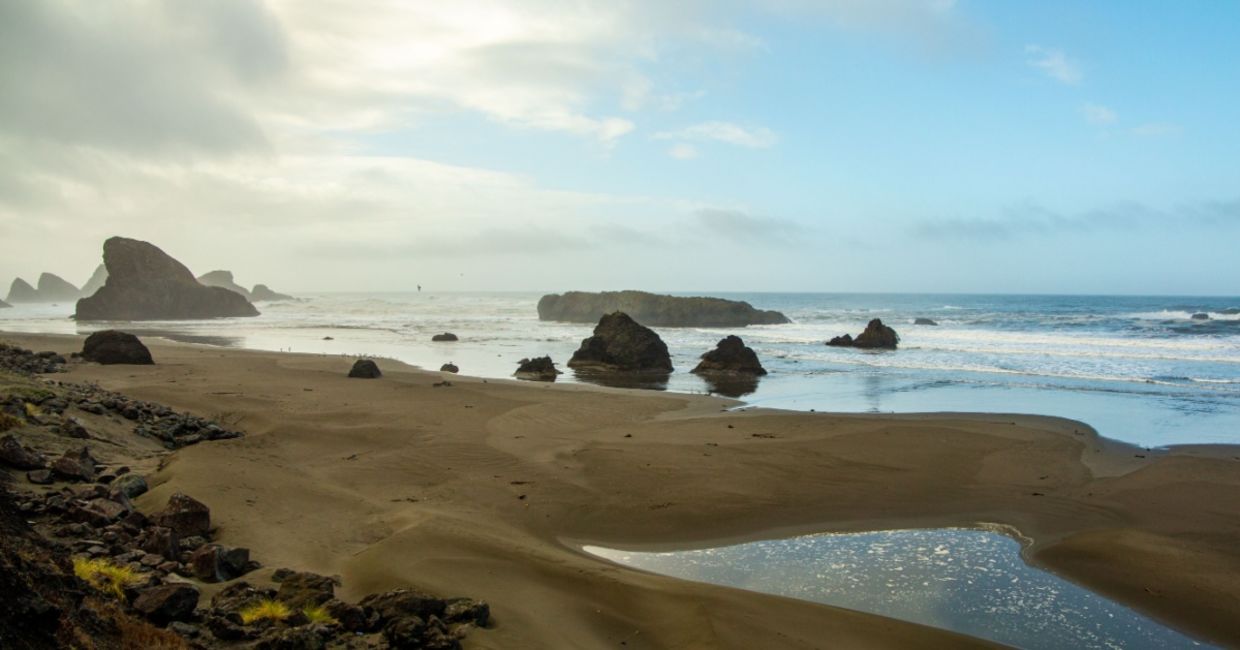
(Paradox Media House / Shutterstock.com)
In welcome news for Indigenous people as well as 4,543 square miles (11,766 square kilometers) of ocean heritage and wildlife, members of Congress and native tribes commemorated the designation of the Chumash Heritage National Marine Sanctuary in mid-October, as the LA Times reports.
The Chumash Sanctuary will be the third largest sanctuary in the National Marine Sanctuary System, and the fifth designated in California.
“I am overwhelmed with pride for our community and just how much, how far we’ve been able to come in such a short time,” says Kenneth Kahn, chairman of the Santa Ynez Band of Chumash Indians. “We’ve got a lot to celebrate.”
A groundbreaking management model
This new marine conservation area is set to be run by the National Oceanic and Atmospheric Administration within the US Department of Commerce (NOAA), but uniquely, Chumash Indians from the Santa Ynez Band of Chumash Indians, have been designated as its key Indigenous partners.
“We’re still here, and so are the Indigenous people wherever you live,” says Violet Sage Walker, chairwoman of the Northern Chumash Tribal Council, who led the campaign for the sanctuary.
“Being able to address climate change, use traditional ecological knowledge, and participate in co-management is Indigenous peoples’ contribution to saving the planet”, NPR reports.
Paul Michel of NOAA, tells the Guardian that this collaborative co-stewardship management structure for the sanctuary will facilitate the respectful and meaningful involvement of representatives and partners from multiple local tribes and Indigenous communities.
The green light for this new marine sanctuary follows years of concerted action by locals: “Generations of central coast residents, from tribal elders to college students, have knocked on doors, sent postcards and emails, circulated petitions, addressed local governments and community groups and held fundraisers on behalf of the marine sanctuary”, Giana Patchen, a local area coordinator, explains to the Guardian.
According to Sam Cohen, government and legal affairs officer with the Chumash Indians, and reported in the LA Times, many people weren’t aware of their oceanic history. In fact, the proposal for the sanctuary was first submitted in 2015 by the Northern Chumash Tribal Council, a nonprofit working to rekindle Chumash culture and heritage.
Shielding biodiversity from negative impacts
A NOAA environmental impact document covers how the marine sanctuary area takes in sandy beaches and rocky shores that are home to seabirds and sea lions. Lush Kelp forests, one of the most biodiverse ocean ecosystems, are located off the coast. Corals, sponges and fish are found on the volcanic terrain of the deep seafloor, while the open ocean is home to whales, turtles and jellyfish. The area is also a feeding ground for marine life migrating along the Pacific coast, Environment California emphasizes.
All of these natural elements are vulnerable to a mix of toxic chemicals and waste from rivers, oil spills, and the impacts of greenhouse gases warming the sea, while cruise ship waste further boosts the threats to these delicate ecosystems.
The new sanctuary will focus on more public outreach and on monitoring for environmental impacts. The Smithsonian Magazine details that it will protect at-risk species such as whales, dolphins, tea turtles and sea otters. Its area will also be protected from oil drilling and undersea mining. NOAA notes that the sanctuary will also promote coexistence with fisheries, which will still be able to operate in the area.
A protected area that won’t just safeguard wildlife
Significantly, this marine area off California’s rugged Central Coast, is said to harbour a rich repository of cultural treasure, including the remains of ancient, submerged human settlements, the LA Times reveals.
The Chumash Indians have territory overlapping with the envisaged Chumash Heritage National Marine Sanctuary. The area covered by the sanctuary is also home to many sacred sites dating back millennia. These include the rocky cliffs known as Point Conception, NPR details. This is where the Chumash believe all people leave this world into the next life.
As the Chumash Sanctuary posts on its FB page, “Together, we’re safeguarding biodiversity, honoring cultural heritage, and strengthening our connection as stewards of these waters.”
US Representative, Salud Carbajal, who represents Santa Barbara, has championed the protected area since he was elected back in 2007.
Speaking to the LA Times about the sanctuary’s many intended accomplishments, he says: “It’s good for the environment, good for biodiversity, the ecosystem, the cultural resources, the marine life, but also [for] protecting our region and coast from future offshore oil drilling.”
YOU MIGHT ALSO LIKE:
Oklahoma Boy Stuns School With His Birdcalls
Webcam of Cute Dutch Seals Warming the Hearts of Fans in Japan
Now Everyone Can Enjoy Tennessee's Scenic State Parks!







